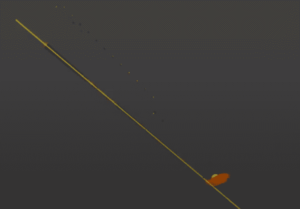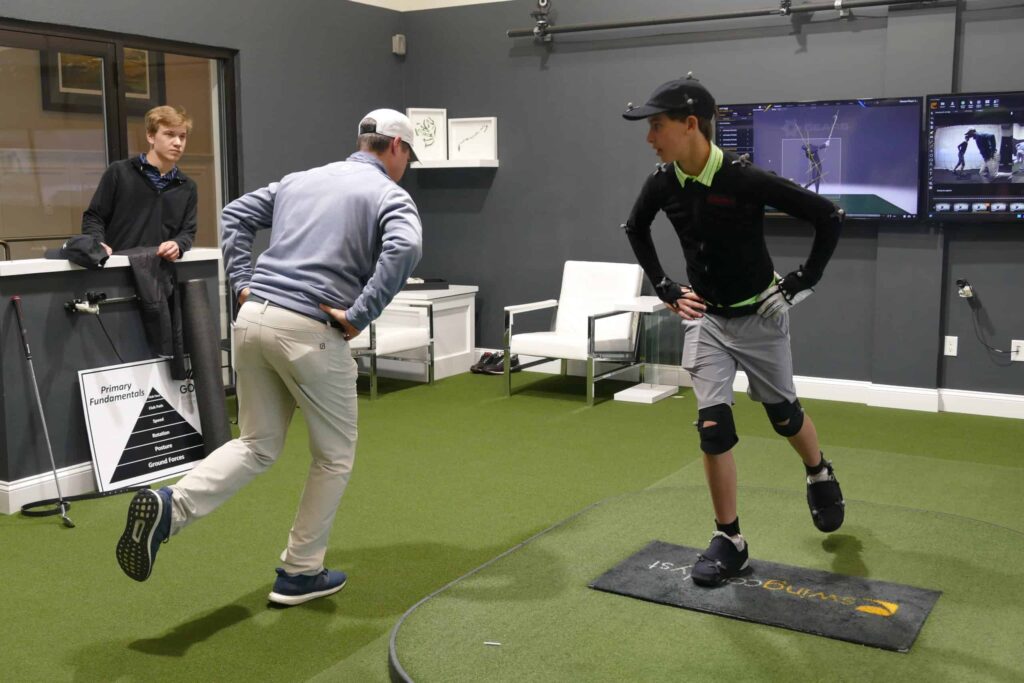How does the shaft affect ball flight?
We’re talking about shafts and in particular, driver/wood graphite shafts. The primary goal for any golfer in finding the “right” driver shaft is to find a shaft that will give them the best opportunity to hit the ball the most consistent and to have manageable mishits. In the fitting experiences we offer, we use GEARS to fine tune how the athlete loads and delivers the club through impact by looking at these metrics. Definitions used in this article for shaft deflection, droop and twist can also be found on GEARS Sports – Golf.
Shaft deflection – Shaft deflection is the bending of the shaft in the forward/backward direction to and away from the target at the time of ball contact. This is measured in millimeters as the amount that the center of the clubhead is off the shaft line. An increase in deflection will result in an increased angle of attack, a lower mark position on the club face, and a swing path that is more leftward. With increased deflection values comes decreased consistency.
What does this mean?
With increased deflection, ie. a soft shaft for a high speed player, this could mean inconsistency in ball contact and club face control. This could also lead to increased spin on the golf ball if it is struck on the lower part of the club face as well as an unfavorable higher or lower than average launch angle. Golf tendencies and characteristics that can also lead to additional deflection are casting, scooping, early extension, and hang back.
Picture 1.1 – Deflection of shaft at impact. Yellow line is straight down the shaft line.
Picture 1.1:
Shaft droop – Shaft droop is the bending of the shaft downward as you look down the line. This is measured in millimeters as the amount that the center of the clubhead moves towards the ground relative to the shaft line. Shaft droop will affect the line of attack, lie angle, face angle and loft. Much like deflection, higher droop values are typically associated with reduced consistency, however, one should look for more droop than deflection. Droop can be decreased through stiffening your club, or less handle raising.
What does this mean?
With increased shaft droop, ie. a soft shaft for a high speed player, this can also mean an inconsistency in ball contact, club face control, and start line relative to the target. Golf tendencies/characteristics that can lead to increased droop which are similar to deflection are casting, scooping, early extension, over the top, and hang back.
Picture 2.1 – Shaft at setup before start of swing.
Picture 2.2 – Shaft at impact
Picture 2.1:
Picture 2.2:
Shaft twist – Shaft twist, measured in degrees, is the amount that the club twists towards the target. This helps the player square the clubface when closure rate is lower. Shaft twist is controlled by the amount of torque built into the club. Torque is a measure of a club’s resistance to twisting. Low torque is around 2 degrees, high torque is around 6-7 degrees. Players who tend to hook the ball will benefit from lower twisting club or lower torque. Players who slice a club with higher torque may be more helpful. Players that have higher than average swing speeds will be wise to consider a club with lower torque. It is important to note that with any club feature, changes in torque will be most helpful to a player with a very consistent swing.
What does this mean?
Players who have a tough time “squaring” up the club face may have a torque issue in the shaft that does not match their swing pattern. We also use grip speed and closure rate in our fittings to best identify the necessary torque needed for a more consistent outcome.
Even with all of this information, it is still important to remember that the golf swing has a human element to it and the fitter/athlete relationship during the fitting should be to benefit the goal of the athlete. It is important to find the appropriate flex and weight to maximize performance and consistency even if it is not what you expected. If interested, check out our fitting experiences and let’s get some numbers!


